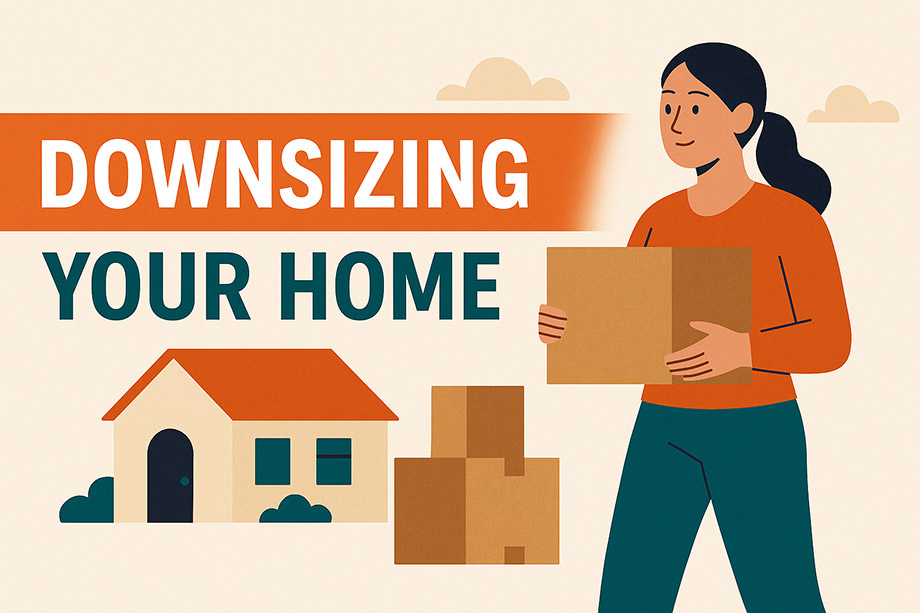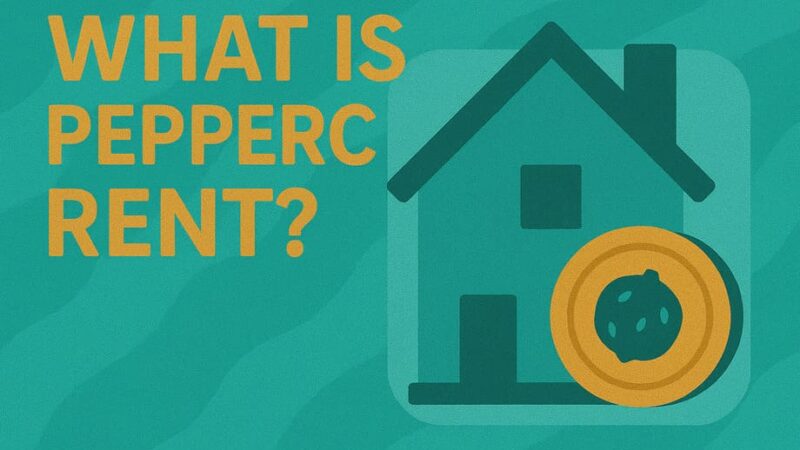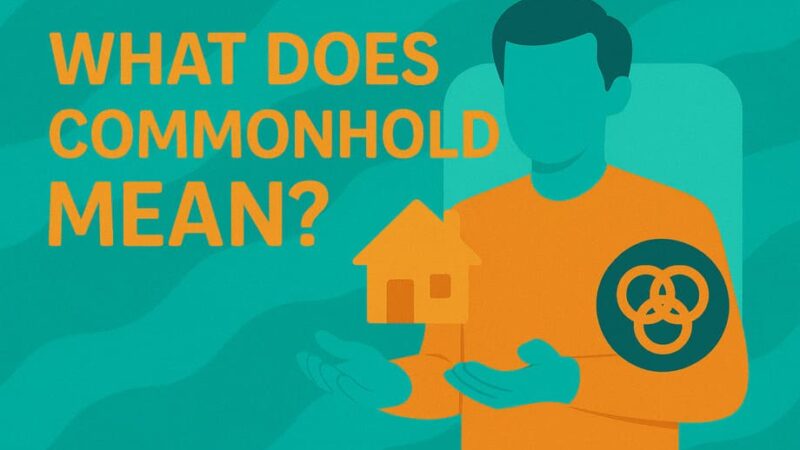Downsizing Your Home – Pros , Cons, Costs & Essential Tips

Making the move to a smaller home can transform your finances and lifestyle. Here’s everything you need to know about downsizing successfully.
Around 55,000 UK households choose to downsize each year, and this number is steadily growing. Whether driven by empty nest syndrome, rising living costs, or simply a desire for a simpler lifestyle, downsizing has become an increasingly popular housing solution.
But is downsizing right for you? And if so, how do you navigate the process successfully while maximising the benefits and minimising the stress?
This comprehensive guide covers everything you need to know about downsizing your home in 2025, from understanding the financial implications to practical tips for decluttering and finding your perfect smaller property.
What is Downsizing?
Downsizing means selling your current home and moving to a smaller, typically less expensive property. This deliberate reduction in living space is most commonly chosen by:
- Empty nesters whose children have moved out
- Retirees looking to reduce expenses and maintenance responsibilities
- People facing financial challenges who need to release equity
- Anyone seeking a simpler lifestyle with fewer possessions and responsibilities
Unlike upsizing, which focuses on gaining more space, downsizing prioritises financial freedom, reduced maintenance, and lifestyle simplification.
Why Do People Choose to Downsize?
Financial Motivations
Release Equity for Retirement Many homeowners have built substantial equity in their family homes over decades. Downsizing can unlock this wealth, providing a lump sum to fund retirement, pay off debts, or invest for future income.
Reduce Monthly Expenses Smaller homes typically mean lower utility bills, council tax, insurance premiums, and maintenance costs. According to Ofgem data, a 1-2 bedroom house averages £115.14 monthly for energy bills compared to £228.74 for a 5+ bedroom property.
Help Children Buy Homes Rising property prices have made it difficult for young adults to get on the property ladder. Many parents choose to downsize to provide deposit assistance to their children.
Pay Off Debts For those struggling with financial obligations, downsizing can provide the capital needed to clear debts and achieve financial freedom.
Lifestyle Motivations
Reduce Maintenance Burden Large homes require significant upkeep – from cleaning and repairs to garden maintenance. Downsizing reduces these responsibilities, freeing up time and energy.
Move Closer to Family Many people downsize to relocate near children, grandchildren, or other family members, particularly as they age.
Better Location Access Downsizing might enable a move to a more convenient location with better transport links, amenities, and healthcare facilities.
Simplify Life Some people simply want fewer possessions and responsibilities, embracing a more minimalist lifestyle.
Circumstantial Reasons
Empty Nest Syndrome When children move out, family homes can feel too large and empty, making smaller spaces more appealing.
Health or Mobility Changes Physical limitations may make maintaining a large property difficult, necessitating a move to more manageable accommodation.
Relationship Changes Divorce or bereavement can create situations where a smaller home becomes more practical or necessary.
The Benefits of Downsizing Your Home
Financial Advantages
Unlock Property Equity If you own your home outright or have significant equity, downsizing can release substantial capital. For example:
- Sell family home for £400,000
- Buy smaller property for £250,000
- Net proceeds: £150,000 (minus moving costs)
Lower Ongoing Costs
- Energy bills: Smaller homes cost less to heat and light
- Council tax: Often lower for smaller properties
- Insurance: Reduced buildings and contents insurance premiums
- Maintenance: Fewer repairs and lower upkeep costs
Mortgage Freedom Many downsizers can buy their new home outright, eliminating monthly mortgage payments and interest charges.
Improved Cash Flow Reduced monthly expenses mean more disposable income for leisure, healthcare, or investments.
Lifestyle Benefits
Less Maintenance Smaller properties require less:
- Cleaning and housework
- Garden maintenance
- General repairs and upkeep
- Time and physical effort
Greater Flexibility With equity released, you have more options for:
- Travel and experiences
- Helping family members
- Healthcare provision
- Investment opportunities
Better Location Downsizing budgets often allow moves to:
- More desirable neighbourhoods
- Better transport connections
- Closer proximity to amenities
- Areas with better healthcare facilities
Simplified Living Smaller spaces encourage:
- Reduced clutter and possessions
- Easier property management
- Lower stress levels
- More intentional lifestyle choices
The Drawbacks of Downsizing
Financial Disadvantages
Moving Costs Downsizing isn’t free. Expect to pay for:
- Estate agent fees (typically 1.42% including VAT)
- Stamp duty on your new purchase
- Legal fees and conveyancing
- Survey and valuation costs
- Removal expenses
Potential Market Timing Issues If property values are high when you’re selling but you need to buy in an expensive area, the financial benefits may be reduced.
Loss of Investment Growth Your family home may have continued appreciating in value. By selling, you miss out on future capital growth on the larger property.
Practical Challenges
Limited Space Adjusting to smaller living spaces can be difficult, particularly for:
- Storing possessions and keepsakes
- Accommodating visiting family
- Pursuing hobbies requiring space
- Maintaining privacy
Emotional Attachment Leaving a family home full of memories can be emotionally challenging, particularly if you’ve lived there for decades.
Limited Property Choice Finding suitable smaller properties in desired locations can be difficult, especially:
- Bungalows suitable for accessibility needs
- Properties with gardens in good areas
- Homes near family members
- Properties at the right price point
Moving Stress House moves are consistently rated as one of life’s most stressful experiences, particularly challenging for older adults.
Types of Properties to Consider When Downsizing
Smaller Houses
- 2-3 bedroom houses instead of 4-5 bedrooms
- Terraced houses instead of detached properties
- Properties with smaller gardens requiring less maintenance
Bungalows
- Single-story living eliminates stair climbing
- Easier accessibility for mobility issues
- Often preferred by older buyers but can be expensive due to high demand
Apartments and Flats
- Minimal maintenance responsibilities
- Often include communal facilities like gardens or gyms
- Better security with controlled access
- Potential service charges to consider
Retirement Properties
- Purpose-built for older residents
- On-site facilities like wardens, communal areas, gardens
- Additional services available (cleaning, maintenance, care)
- Higher service charges and potential exit fees
Park Homes
- Lower purchase prices than traditional properties
- Often in scenic locations with community facilities
- Leasehold arrangements with ongoing pitch fees
- Potential resale restrictions to consider
Financial Planning for Downsizing
Calculating Your Equity Release
Step 1: Determine Current Property Value Get your property valued by 2-3 local estate agents for accurate market estimates.
Step 2: Calculate Outstanding Mortgage Contact your lender for a current redemption statement showing exactly what you owe.
Step 3: Estimate Moving Costs Budget for all expenses:
- Estate agent fees: 1.42% average
- Legal fees: £800-£1,500
- Stamp duty: Use HMRC calculator
- Survey costs: £300-£1,500
- Removal costs: £500-£2,000
Step 4: Research Target Property Prices Look at realistic property prices in your desired area and property type.
Step 5: Calculate Net Proceeds Current property value – mortgage – moving costs – new property cost = equity release
Example Calculation
Current Situation:
- Property value: £350,000
- Outstanding mortgage: £50,000
- Equity: £300,000
Moving Costs:
- Estate agent fees: £4,970
- Legal fees: £1,200
- Stamp duty: £2,500 (on £200,000 purchase)
- Other costs: £2,000
- Total moving costs: £10,670
New Property:
- Purchase price: £200,000
Net Equity Release: £350,000 – £50,000 – £10,670 – £200,000 = £89,330
The Downsizing Process: Step-by-Step Guide
Phase 1: Decision and Planning (2-3 months)
1. Confirm Your Motivation
- Write down why you want to downsize
- Discuss with family members
- Consider alternatives (equity release, home improvements)
2. Set Your Parameters
- Maximum budget for new property
- Preferred locations and areas
- Essential vs. desirable features
- Timeline for moving
3. Research the Market
- Property prices in target areas
- Available properties meeting your criteria
- Local amenities and transport links
- Future development plans affecting the area
4. Get Professional Advice
- Mortgage advisor (if financing needed)
- Independent financial advisor
- Estate agent for property valuations
- Solicitor for legal guidance
Phase 2: Preparation (2-4 months)
5. Value Your Current Property
- Get valuations from 2-3 estate agents
- Consider independent RICS valuation
- Research recent comparable sales
- Factor in any improvements needed
6. Start Decluttering Early
- Begin with least emotional items
- Work through one room at a time
- Follow the “one-year rule” – if unused, consider discarding
- Donate, sell, or gift unwanted items
7. Prepare Your Property for Sale
- Complete necessary repairs
- Consider minor improvements to add value
- Deep clean throughout
- Declutter and depersonalise for viewings
Phase 3: Marketing and Searching (1-3 months)
8. List Your Property
- Choose estate agent or sell privately
- Set competitive asking price
- Arrange professional photography
- Write compelling property description
9. Begin Property Hunting
- Register with estate agents in target areas
- Set up property alerts online
- Attend viewings with systematic approach
- Take notes and photos for comparison
10. Arrange Mortgage in Principle (if needed)
- Speak to mortgage advisor
- Get agreement in principle
- Understand borrowing capacity
- Compare different lenders and products
Phase 4: Negotiation and Exchange (1-2 months)
11. Negotiate Offers
- On your sale: consider all factors, not just price
- On your purchase: research comparable sales
- Factor in chain length and buyer/seller circumstances
- Consider timing and flexibility
12. Instruct Solicitors
- Choose experienced conveyancing solicitor
- Provide all necessary documentation
- Chase progress regularly
- Prepare for potential delays
13. Arrange Surveys
- Book homebuyer’s survey on your purchase
- Address any issues discovered
- Renegotiate price if significant problems found
- Consider retention for incomplete work
Phase 5: Completion and Moving (1 month)
14. Final Preparations
- Book removal company
- Arrange utility transfers
- Update address with all organisations
- Plan moving day logistics
15. Exchange and Complete
- Exchange contracts when ready
- Arrange completion date
- Transfer funds through solicitor
- Collect keys and move in
Downsizing Costs Breakdown
Selling Your Current Home
| Cost | Typical Range | Example (£300k sale) |
|---|---|---|
| Estate Agent Fees | 1.0% – 3.0% + VAT | £4,260 (1.42% avg) |
| Legal Fees | £500 – £1,500 | £800 |
| Energy Performance Certificate | £35 – £120 | £80 |
| Total Selling Costs | £5,140 |
Buying Your New Home
| Cost | Typical Range | Example (£200k purchase) |
|---|---|---|
| Stamp Duty | 0% – 12% (varies by value) | £1,500 |
| Legal Fees | £800 – £1,500 | £1,200 |
| Survey | £300 – £1,500 | £600 |
| Mortgage Fees | £0 – £2,000 | £500 (if applicable) |
| Total Buying Costs | £3,800 |
Moving Costs
| Cost | Typical Range | Example |
|---|---|---|
| Removal Company | £300 – £2,000 | £800 |
| Storage (if needed) | £50 – £300/month | £200 |
| Utility Connections | £0 – £200 | £100 |
| Total Moving Costs | £1,100 |
Total Downsizing Costs: £10,040
Note: Costs vary significantly based on property values, locations, and individual circumstances.
Decluttering for Downsizing Success
The Room-by-Room Approach
Start with Storage Areas
- Loft/attic spaces
- Garages and sheds
- Cupboards and wardrobes
- Basement or cellar
Progress to Living Areas
- Spare bedrooms first
- Main living areas
- Kitchen and dining room
- Master bedroom last
Sorting Strategy
Create Four Categories:
- Keep: Essential items for new home
- Donate: Good condition items others can use
- Sell: Valuable items worth selling
- Discard: Items beyond useful life
The One-Year Rule
Ask yourself: “Have I used this item in the past year?”
- If yes → Consider keeping
- If no → Strong candidate for removal
- If sentimental → Keep small representative items only
Measuring for Your New Space
Before Viewing Properties:
- Measure your existing furniture
- Create a floor plan with measurements
- Identify which pieces will fit
When Viewing Properties:
- Take measuring tape
- Check door widths and ceiling heights
- Consider furniture placement options
- Take photos with dimensions noted
Dealing with Sentimental Items
Keep the Most Meaningful
- Choose representative pieces rather than everything
- Consider taking photos of items you can’t keep
- Give special items to family members who’ll value them
- Create memory boxes with small keepsakes
Digital Solutions
- Scan important documents and photos
- Create digital photo albums
- Record video messages about meaningful items
- Keep digital copies, donate originals
Choosing Your New Home: Essential Considerations
Location Factors
Proximity to Amenities
- Shopping centres and supermarkets
- Healthcare facilities (GP, hospital, pharmacy)
- Public transport links
- Social and leisure facilities
Future Accessibility Needs
- Ground floor accommodation or lift access
- Wheelchair accessibility
- Parking availability
- Garden maintenance requirements
Community and Social Aspects
- Neighbourhood demographics
- Community centres and groups
- Safety and security levels
- Noise levels and busy roads
Property Features
Essential Features
- Number of bedrooms needed
- Bathroom accessibility (ground floor WC)
- Kitchen size and layout
- Heating system efficiency
- Storage space availability
Future-Proofing Considerations
- Potential for adaptations
- Stair climbing requirements
- Garden maintenance needs
- Technology connectivity
Financial Considerations
- Council tax band
- Service charges (leasehold properties)
- Ground rent obligations
- Potential maintenance costs
Alternative Options to Traditional Downsizing
Shared Ownership for Older People
How It Works:
- Buy 25%-75% of a property
- Pay rent on remaining share
- Lower initial capital required
- Option to increase ownership over time
Considerations:
- Usually maximum 75% ownership
- Ongoing rent payments
- Service charges may apply
- Resale restrictions possible
Part Exchange Schemes
Developer Schemes:
- Developer buys your current home
- You purchase new build property
- Simplified process with one transaction
- Less choice in properties available
Considerations:
- May receive less than market value
- Limited to specific developments
- Less negotiation flexibility
- Potential for higher purchase prices
Equity Release Instead of Moving
Lifetime Mortgages:
- Borrow against property value
- No monthly repayments required
- Stay in your current home
- Interest compounds over time
Home Reversion:
- Sell percentage of property
- Receive lump sum or regular payments
- Retain right to live there
- Less inheritance for beneficiaries
When to Consider:
- Strong attachment to current home
- Limited suitable alternative properties
- Health issues making moving difficult
- Family nearby providing support
When Should You Downsize?
Life Stage Indicators
Empty Nest Phase (typically 50-65)
- Children have moved out permanently
- Large family home feels underused
- Maintenance becoming burdensome
- Desire for lifestyle change
Pre-Retirement (typically 55-67)
- Planning for reduced income
- Wanting to clear mortgage before retirement
- Health still good for managing moves
- Time to establish new social connections
Early Retirement (typically 65-75)
- Adjusting to fixed income
- Wanting to reduce responsibilities
- While still physically capable of moving
- Before potential health issues arise
Financial Timing
Mortgage Status
- When mortgage balance is low
- Before interest rates rise significantly
- When property values are favourable
- When alternative properties are available
Market Conditions
- Strong seller’s market for your property type
- Good availability of suitable smaller properties
- Stable economic conditions
- Before potential stamp duty changes
Personal Readiness Indicators
Physical Capability
- While fit enough to manage moving stress
- Before mobility issues develop
- When still capable of viewing multiple properties
- Before health conditions limit options
Emotional Readiness
- Acceptance of lifestyle change
- Excitement about new opportunities
- Family support for the decision
- Clear vision of future lifestyle
Common Downsizing Mistakes to Avoid
Financial Mistakes
Underestimating Moving Costs
- Factor in all fees, taxes, and expenses
- Include temporary accommodation if needed
- Budget for new furniture or modifications
- Allow contingency for unexpected costs
Rushing Into Unsuitable Properties
- Don’t settle for first available option
- Consider long-term suitability
- Factor in potential future needs
- Research area thoroughly before committing
Not Getting Professional Advice
- Consult independent financial advisor
- Get property professionally valued
- Seek legal advice on complex transactions
- Consider tax implications of decisions
Practical Mistakes
Leaving Decluttering Too Late
- Start process 6-12 months before moving
- Allow time for emotional adjustment
- Avoid rushed decisions about possessions
- Plan storage solutions if needed
Not Researching New Area Thoroughly
- Visit at different times of day/week
- Check transport links and accessibility
- Research future development plans
- Consider seasonal variations (holiday areas)
Choosing Unsuitable Property Type
- Consider long-term mobility needs
- Factor in maintenance requirements
- Check service charges and obligations
- Understand leasehold restrictions
Emotional Mistakes
Making Decisions Based on Others’ Expectations
- Ensure decision is right for you
- Don’t be pressured by family members
- Consider your own needs and preferences
- Make decision when emotionally ready
Not Planning for Adjustment Period
- Expect some initial regret or homesickness
- Plan ways to meet new neighbours
- Keep busy with activities and interests
- Stay connected with old friends
Making Downsizing Work: Success Tips
Before You Move
Plan Thoroughly
- Create detailed timeline with milestones
- Research all aspects of target areas
- Get multiple quotes for all services
- Prepare contingency plans for delays
Involve Family
- Discuss decisions with affected family members
- Get children to collect their belongings
- Share sentimental items with relatives
- Ensure everyone understands your motivations
Professional Support
- Build team of trusted professionals
- Check credentials and reviews
- Get clear fee structures upfront
- Maintain regular communication
During the Process
Stay Organized
- Keep important documents together
- Track all costs and expenses
- Maintain communication logs
- Update all parties on progress regularly
Manage Stress
- Accept that delays may occur
- Focus on end benefits when frustrated
- Ask for help when needed
- Take breaks from the process when possible
Be Flexible
- Consider various property options
- Adapt plans if circumstances change
- Negotiate on timing if beneficial
- Keep backup options available
After Moving
Give Yourself Time
- Allow 6-12 months to feel settled
- Join local groups and activities
- Explore your new area thoroughly
- Be patient with adjustment process
Stay Connected
- Maintain relationships with old neighbours
- Invite friends to visit new home
- Share positive aspects of move
- Help others considering downsizing
Enjoy the Benefits
- Focus on reduced responsibilities
- Appreciate lower costs and bills
- Make the most of released equity
- Embrace new opportunities
Frequently Asked Questions
Is there a right age to downsize?
There’s no specific age for downsizing – it depends on individual circumstances. Research suggests many people consider it in their late 50s to early 60s, but some downsize much earlier or later. The key is downsizing while you’re physically and emotionally capable of managing the process.
How much money can I save by downsizing?
Savings vary greatly depending on:
- Difference in property values
- Reduction in running costs
- Your current mortgage situation
- Location and property type changes
A typical example might see annual savings of £3,000-£8,000 on running costs alone, plus equity release of £50,000-£150,000.
What if I can’t find suitable properties in my area?
Consider:
- Expanding your search radius
- Looking at different property types
- Waiting for market conditions to improve
- Exploring alternative solutions like equity release
- Considering relocation to areas with better options
Should I pay off my mortgage before downsizing?
This depends on:
- Current interest rates vs. investment returns
- Your age and risk tolerance
- Available liquid funds
- Tax implications
Consult an independent financial advisor for personalized advice.
How long does the downsizing process take?
Typically 6-12 months from decision to completion:
- Planning and preparation: 2-4 months
- Marketing and searching: 1-3 months
- Legal process: 2-3 months
- Moving and settling: 1-2 months
What if I regret downsizing?
Some initial adjustment is normal, but serious regret is less common when the decision is well-planned. If you do experience significant regret:
- Give yourself 6-12 months to adjust
- Focus on the benefits you hoped to achieve
- Consider if modifications to your new home could help
- Remember that you can always move again if necessary
Conclusion: Is Downsizing Right for You?
Downsizing can be a transformative decision, offering financial freedom, reduced responsibilities, and a simpler lifestyle. However, it’s not right for everyone, and success depends on careful planning, realistic expectations, and thorough preparation.
Downsizing works best when you:
- Have clear, positive motivations for the move
- Can find suitable alternative properties
- Are emotionally ready for change
- Have adequate time to plan and execute properly
- Can benefit financially from the transition
Consider alternatives if you:
- Are strongly attached to your current home
- Cannot find suitable downsizing options
- Are being pressured by others to move
- Haven’t thoroughly researched the implications
- Are in poor health or facing major life stresses
Remember, downsizing is ultimately about improving your quality of life, whether through financial benefits, reduced responsibilities, or better location. Take time to consider your options carefully, seek professional advice where needed, and make the decision that’s right for your unique circumstances.
The process may seem daunting, but with proper planning and preparation, downsizing can be the key to a more comfortable, financially secure, and fulfilling lifestyle.
Need Professional Help?
Consider consulting with:
- Independent Financial Advisors for financial planning
- Estate Agents for property valuations and market advice
- Solicitors for legal guidance and conveyancing
- Mortgage Brokers if financing is needed
- Removal Companies for moving logistics
This guide provides general information only and should not be considered financial advice. Always consult qualified professionals before making significant financial decisions.
Last Updated on August 3, 2025 by James Cartwright







